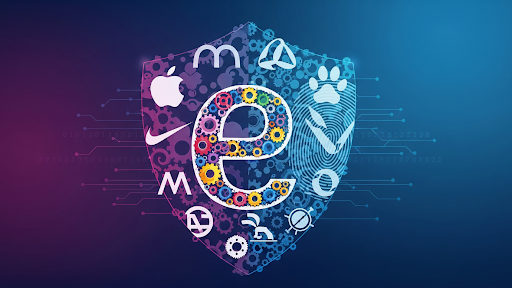
Artificial intelligence (AI) isn’t some distant thing that is in research labs or Silicon Valley startups
It’s already in the places we touch every single day — the car you drive to work (Advanced Driver Assistance Systems, navigation & routing), the groceries you pick up (from smart fridge, checkout automation) on the way home.
The two industries show this shift more clearly than most: cars and food. Sounds like a strange pairing, right? But dig in a little, and you see the same thread running through both.
Machines learning patterns, predicting behavior, cutting waste, improving safety. They all just showing up in different ways.
AI in Automotive: Beyond the Hype of Driverless Cars
Ask anyone on the street about AI in automotive and they’ll probably say “self-driving.” Sure, that’s the flashy part. But honestly? That’s only one corner of the story.
Most of the action is happening quietly in the background:
- On the factory floor, robots with cameras and algorithms spot defects faster than a trained inspector. A weld slightly off. A hairline crack invisible to the human eye that could mean a recall. Found before the car even rolls out.
- Inside the vehicle, sensors track wear and tear. Based on metrics like vibration, temperature, usage history, etc., AI can predict, “This part is likely to fail in 200 miles.” That proactive warning helps reduce downtime, repair costs, and improves safety — leading to fewer roadside emergencies.
- Even the supply chain gets smarter. Remember the chip shortages that froze production lines? Automakers are now leaning on AI to forecast bottlenecks, juggle supplier risks, and keep the lines running.
Step back, and what do you see? Cars are turning into rolling computers. Every trip generates data.
Every mile gets analyzed. The future isn’t just autonomous driving—it’s cars that learn, adapt, and communicate constantly.
AI in Food Industry: Subtle but Everywhere
Now shift gears. Think about the sandwich you had for lunch or the produce you picked up at the store. You may not realize it, but AI in food industry touched it along the way.
And here, AI doesn’t look like robots in a sci-fi movie. It’s quieter, but maybe even more impactful.
- Food safety systems scan conveyor belts, catching contaminants (foreign objects, spoiled items, damaged packaging) and subtle defects (color, shape, fill level) before they slip through. They’re far more faster than a human inspector could ever hope to be.
- Supermarkets lean on predictive algorithms to know exactly how much bread or milk to stock based on historical sales, weather, holidays, promotions, etc. So, there’s not too much (overstocking), nor too little (loss of shoppers).
- Cold storage and shipping use AI to track conditions — temperature, humidity, vibration. The systems provide alerts when conditions drift outside safe limits, predict refrigeration failures, and optimize transport routes. The result? Less spoilage between farm and table.
- On the consumer side, apps build diet plans, recommend meals, or tailor nutrition advice based on your health data, taste preferences, what’s in season, and what’s available locally. They’re sometimes synced right with your smartwatch.
It’s not glamorous, but it matters. Because while not everyone drives, everyone eats. And the reach here? Billions of people, every single day.
Same Technology, Different Goals
Cars and cucumbers don’t seem like they belong in the same sentence. But zoom out, and you see the parallels. For instance:
- Efficiency. Automakers cutting downtime. Food distributors cutting waste.
- Prediction. A car predicting component failure. A grocery predicting a surge in soup sales.
- Trust. Drivers expect safer cars. Shoppers love fresher food.
The same core technologies are being adapted to different end‑goals; there’s opportunity for cross‐fertilization where learnings in food safety might inform safety and inspection in automotive sector, and vice versa.
The Roadblocks
Let’s not pretend it’s always smooth. Both industries hit bumps when it comes to AI.
- Bad data. Garbage in, garbage out. If training data is flawed, predictions fall apart. A car misses a stop sign. A grocery store may fail to detect the spoilage.
- Cost. Upgrading factories with AI-powered robots isn’t cheap. Neither is kitting out and maintaining global supply chains with AI sensors.
- Regulation. Governments can’t keep up. What happens legally when a self-driving car crashes? How do regulators certify food safety when AI makes the call?
- Skepticism. Would you hop into a taxi with no driver? Or trust an algorithm over a human inspector to tell you if your spinach is safe? Trust takes time and evidence.
Lessons for Everyone Else
If AI can make sense in industries this traditional — cars, food — it can make sense almost anywhere. These aren’t “digital-first” businesses. They’re old, entrenched, physical industries.
So, what can others learn?
- Start small. You don’t need full-blown autonomous systems. Pick one process. Automate one bottleneck. Prove it works, then scale.
- Don’t chase the hype. Some of the biggest wins aren’t headline-worthy. It’s less sexy than a driverless car but cutting spoilage by 5% in food supply chains saves millions.
- Train people, not just machines. Tech alone doesn’t cut it. The best results come when workers actually trust and understand what the AI is doing.
Wrapping It Up
Look at it side by side:
- AI in automotive is pushing us toward vehicles that drive, maintain, and even manage themselves.
- AI in food industry is shaping the way food is grown, transported, and consumed — often without us even noticing.
Different outcomes. Same core idea: intelligent systems making old processes faster, safer, and smarter.
AI isn’t just a buzzword. It’s already on the factory floor.
It’s already in the grocery aisle. And for every other business watching from the sidelines, the real question isn’t whether AI applies to you. It’s how long you’ll wait before you let it.




